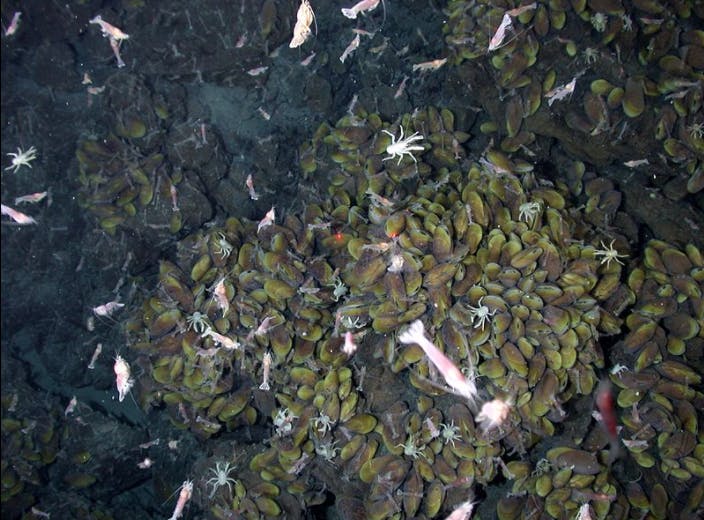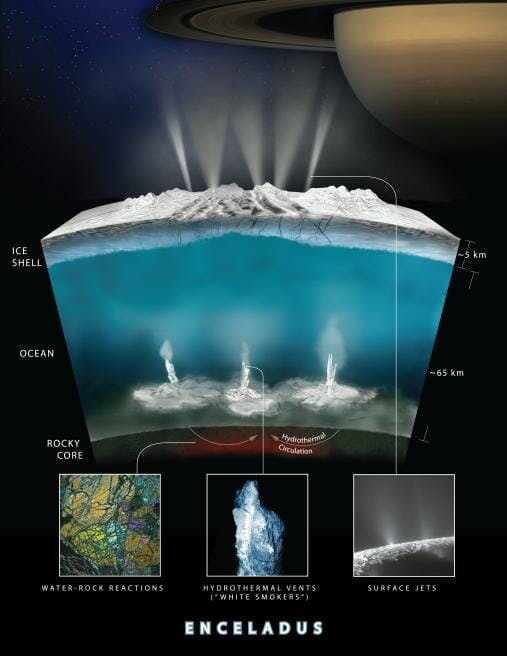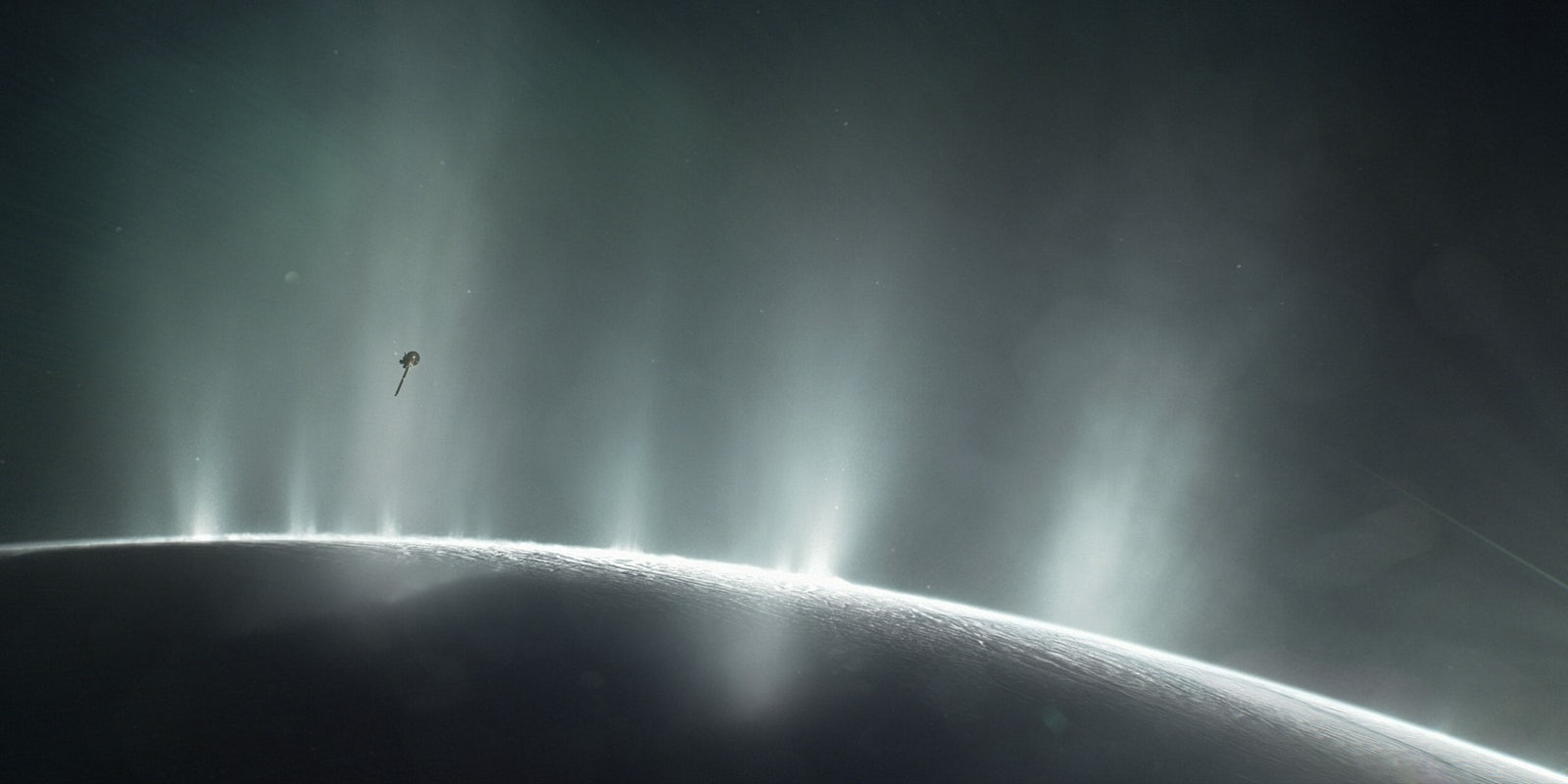The discovery of extraterrestrial life in the universe would be a game-changing milestone for science, and new findings revealed by NASA on Thursday give hope we could still uncover that evidence in our own solar system.
For a long time, scientists believed that the energy for all life on Earth came from the sun, starting with plants and going all the way up the food chain. Then we developed the technology to visit thermal vents deep on the ocean floor that support life with chemical energy completely removed from the sun. NASA scientists say they now believe Saturn’s moon Enceladus and Jupiter’s moon Europa could host similar life-supporting chemical energy in oceans deep below their icy surfaces.

The findings come thanks NASA’s Cassini spacecraft and the Hubble Space Telescope. Observations by Cassini suggest “hydrogen gas, which could potentially provide a chemical energy source for life, is pouring into the subsurface ocean of Enceladus from hydrothermal activity on the seafloor.” Hubble, meanwhile, has helped identify the location of a potential hydrothermal vent on Europa.

“This is the closest we’ve come, so far, to identifying a place with some of the ingredients needed for a habitable environment,” Thomas Zurbuchen, associate administrator for NASA’s Science Mission Directorate at Headquarters in Washington, said in a statement. ”These results demonstrate the interconnected nature of NASA’s science missions that are getting us closer to answering whether we are indeed alone or not.”
So does that mean Europa or Enceladus could be home to populations of alien squids and shrimp? It’s possible, but NASA scientists presenting the findings at a press conference said they’d be happy to find any signs of life from microbes on up.
You can learn more about the findings in the video below, and at NASA’s website.
https://www.youtube.com/watch?time_continue=315&v=wG-jrJnfI3g


